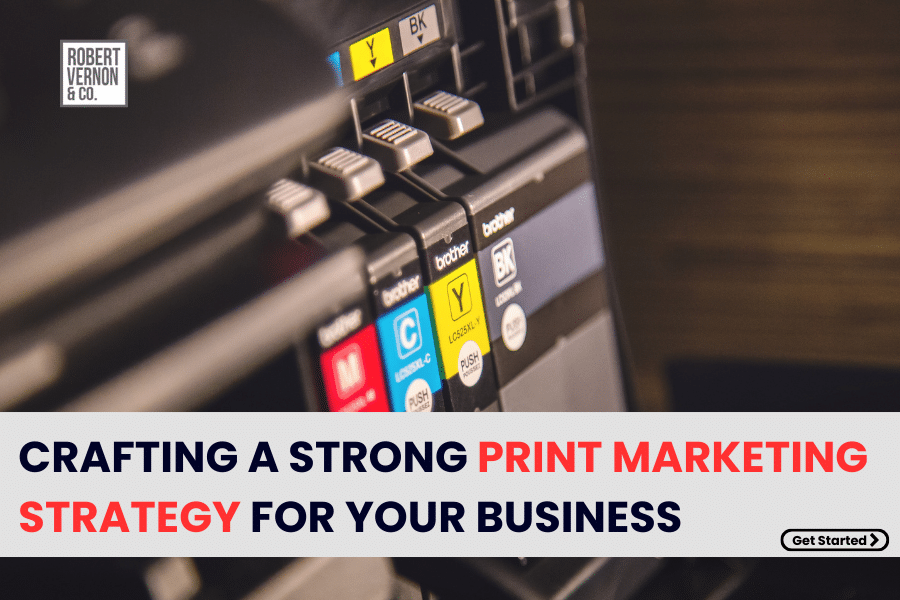In today’s digital age, where online advertising and social media dominate the marketing landscape, it’s easy to overlook the power of print marketing. However, print marketing strategy still holds a valuable place in any comprehensive market. In this article, I will guide you through the process of developing an effective print marketing strategy for your business. From understanding your target audience to choosing the right materials and measuring success, we will cover all the essential steps to ensure your print marketing efforts are successful.
The Importance of Print Marketing in the Digital Age
While digital marketing has revolutionized the way businesses connect with their audience, print marketing continues to play a crucial role in reaching customers. Print materials provide a tangible and lasting impression that digital ads cannot replicate. In a world inundated with online content, print marketing stands out as a unique and memorable way to engage with your target audience.
Print marketing also allows you to reach a different demographic. Not everyone is constantly connected to the internet, and print materials provide an opportunity to connect with potential customers who may not be easily accessible through digital channels. By incorporating print marketing into your overall strategy, you can reach a wider audience and increase brand visibility.
Understanding Your Target Audience for Print Marketing
Before you begin developing your print marketing strategy, it is essential to have a clear understanding of your target audience. Research and analyze your customer base to identify their demographics, interests, and preferences. By understanding who your audience is, you can tailor your print marketing materials to resonate with them effectively.
Consider conducting surveys, focus groups, or analyzing customer data to gather insights about your target audience. This information will help you make informed decisions regarding the design, messaging, and distribution channels for your print marketing materials. Remember, the more you know about your audience, the better you can create targeted and impactful print marketing campaigns.
Setting Clear Goals for Your Print Marketing Strategy
Like any marketing initiative, setting clear goals is crucial to measuring success and ensuring a return on investment. Before diving into the development of your print marketing strategy, take the time to define your objectives. Are you looking to increase brand awareness, generate leads, drive website traffic, or boost sales?
By setting specific, measurable, attainable, relevant, and time-bound (SMART) goals, you will have a clear roadmap for your print marketing strategy. These goals will guide your decision-making process and help you track the effectiveness of your campaigns. Whether it’s a percentage increase in sales or a target number of leads generated, having well-defined goals will keep your print marketing efforts focused and aligned with your overall business objectives.
Choosing the Right Print Marketing Materials
When it comes to print marketing, there is a wide array of materials to choose from. Each material has its own unique benefits and is suitable for different purposes. Consider your target audience, budget, and campaign goals when selecting the right print marketing materials for your business.
Business cards are a classic and essential print marketing tool. They provide a professional and convenient way for potential customers to contact you. Brochures and flyers are effective for showcasing your products or services in a compact and visually appealing format. Posters and banners are attention-grabbing tools that can be used for events or to decorate your business space.
Additionally, you may want to explore more innovative print materials, such as interactive direct mailers or customized packaging. These unique materials can leave a lasting impression and differentiate your brand from competitors. Ultimately, the key is to select materials that align with your brand identity, engage your target audience, and effectively convey your message.
Designing Effective Print Marketing Materials
Once you have chosen the right print marketing materials, the next step is to design them in a way that captures attention and effectively communicates your message. A well-designed print material should be visually appealing, easy to read, and aligned with your brand identity.
Start by creating a visually striking layout that incorporates your brand colors, typography, and logo. Use high-quality images and graphics that enhance your message and resonate with your target audience. Keep the design clean and uncluttered, ensuring that the important information and call to action are prominently displayed.
Consider the hierarchy of information and use headings, subheadings, and bullet points to make the content easily scannable. Use compelling and persuasive copy that speaks directly to your audience’s needs and desires. Remember, the design and messaging of your print marketing materials should work together to create a cohesive and impactful experience for your audience.
Printing Options and Considerations
Once your print materials are designed, it’s time to bring them to life through printing. There are various printing options and considerations to keep in mind to ensure the best quality and cost-effectiveness for your print marketing strategy.
Offset printing is a traditional method that offers high-quality results for large print runs. It is suitable for materials like brochures, catalogs, and posters. Digital printing, on the other hand, is more cost-effective for small print runs and allows for more flexibility in customization. It is ideal for personalized direct mailers or variable data printing.
When choosing a printing method, consider factors such as turnaround time, print quality, budget, and quantity. Additionally, select the right paper stock and finishes that align with your brand and enhance the overall look and feel of your print materials. Collaborate with a reputable printing company that understands your needs and can deliver the desired results.
Measuring the Success of Your Print Marketing Strategy
To ensure the effectiveness of your print marketing strategy, it is essential to measure its success and make data-driven decisions for future campaigns. There are several metrics you can track to evaluate the impact of your print materials.
Start by tracking the response rate of your direct mail campaigns. By including a unique code or URL, you can easily track the number of customers who responded to your print materials. Additionally, monitor website traffic and lead conversions that can be attributed to your print marketing efforts.
Conduct surveys or interviews to gather feedback from customers who received your print materials. This will provide valuable insights into their perception and engagement with your brand. By analyzing these metrics and feedback, you can make informed adjustments to your print marketing strategy and continuously improve its effectiveness.
Print Marketing Trends and Innovations
As technology advances, print marketing continues to evolve with new trends and innovations. Stay updated with the latest developments to ensure your print marketing strategy remains relevant and impactful.
One trend is the integration of augmented reality (AR) and QR codes into print materials. By using smartphone apps, customers can scan QR codes or images in print materials to access additional content or interactive experiences. This enhances engagement and bridges the gap between print and digital marketing.
Another trend is the use of sustainable and eco-friendly printing practices. Customers are increasingly conscious of environmental impact, and using recycled paper and environmentally friendly inks can enhance your brand image and resonate with eco-conscious consumers.
Conclusion:
In conclusion, print marketing continues to be a valuable tool in any comprehensive marketing strategy. By understanding your target audience, setting clear goals, choosing the right materials, and designing effective print marketing campaigns, you can leverage the unique benefits of print in a digital world.
Remember to select the appropriate printing options and distribution channels, and continuously measure the success of your print marketing strategy to make data-driven improvements. Stay updated with the latest print marketing trends and innovations to ensure your campaigns remain relevant and impactful.
Print marketing may not be as trendy as digital marketing, but its ability to create a lasting impression and engage customers in a tangible way is unparalleled. By incorporating print marketing into your overall strategy, you can effectively reach your target audience, increase brand visibility, and drive business growth. Embrace the power of print marketing strategy and take your business to new heights in the digital age.
Ready to develop your print marketing strategy? Contact us today for a consultation and let us help you create impactful print materials that will make your business stand out.









